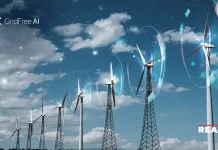Covanta, a world leader in sustainable waste and energy solutions, announced that emissions data for five of its New York Waste-to-Energy (WTE) facilities is now available online. This data, which is the same used by onsite operators to monitor operational performance, provides an unfettered view for community members and stakeholders to experience the science behind modern waste management facilities.
Also Read:-Panel Discussion on the International Solar Alliance and the Quest for Clean Energy
“By making this data readily available to the public, we hope that people will see beyond our facilities’ industrial appearance and develop a greater understanding of how Waste-to-Energy technology fits into New York’s ambitious climate goals.” said Derek Veenhof, executive vice president and chief operating officer at Covanta. “Waste-to-Energy is widely recognized as the more sustainable option for disposing of non-hazardous, household waste post recycling versus sending that waste to a landfill. WTE technology helps mitigate global warming by cutting greenhouse gas emissions through methane avoidance, while increasing recycling through metal recovery.”
Continuous emissions monitoring is an important tool in determining a facility’s compliance with the strict emission limits set forth under the federal Clean Air Act and New York’s progressive state regulatory requirements. Covanta’s New York facilities operate up to 99 percent below their permit air limits – demonstrating their strong environmental track record.
Waste-to-Energy facilities convert the waste that remains after recycling into electricity for homes and businesses. This technology is recognized internationally as a source of greenhouse gas mitigation because it diverts waste from landfills, a major source of methane, a greenhouse gas 84 times more potent than carbon dioxide. Scientists have estimated that each ton of waste diverted from landfill to Waste-to-Energy facilities reduces life-cycle greenhouse gas emissions by one ton.
Annually, Covanta’s New York Waste-to-Energy facilities reduce greenhouse gas emissions by 2.6 million metric tons and generate continuous power for over 120,000 homes.




